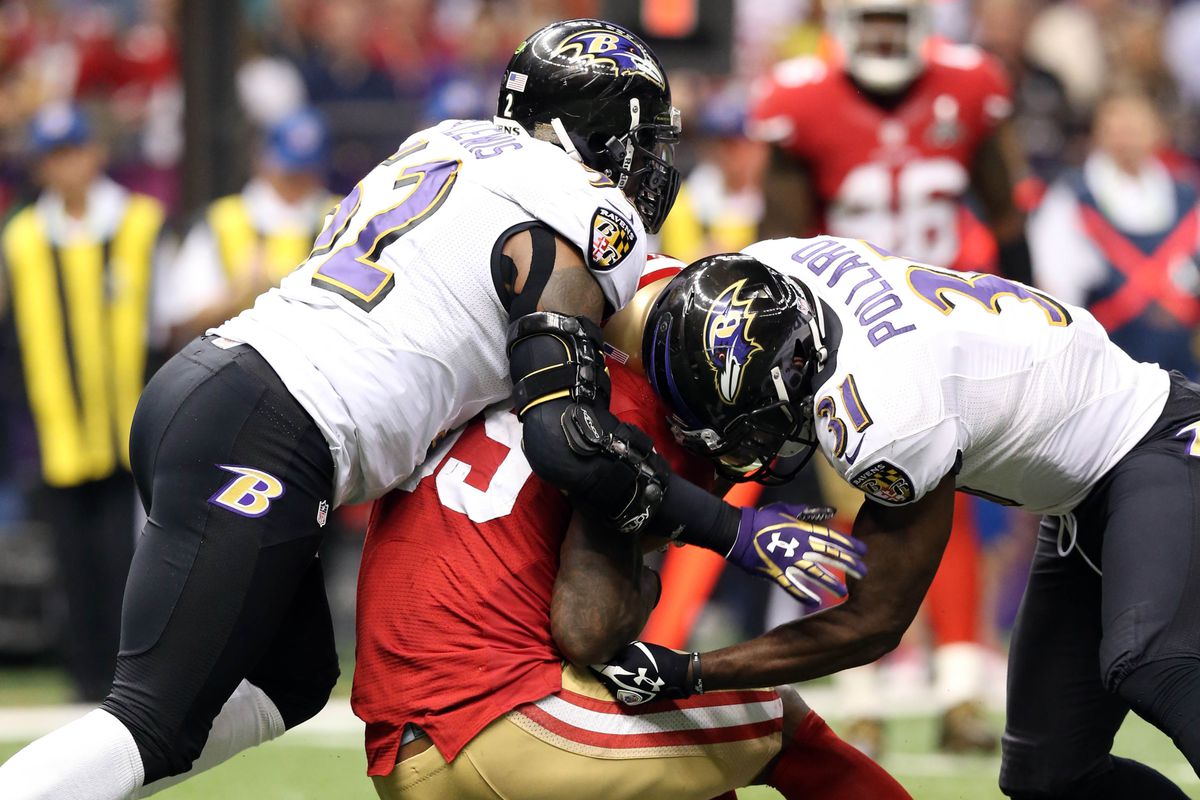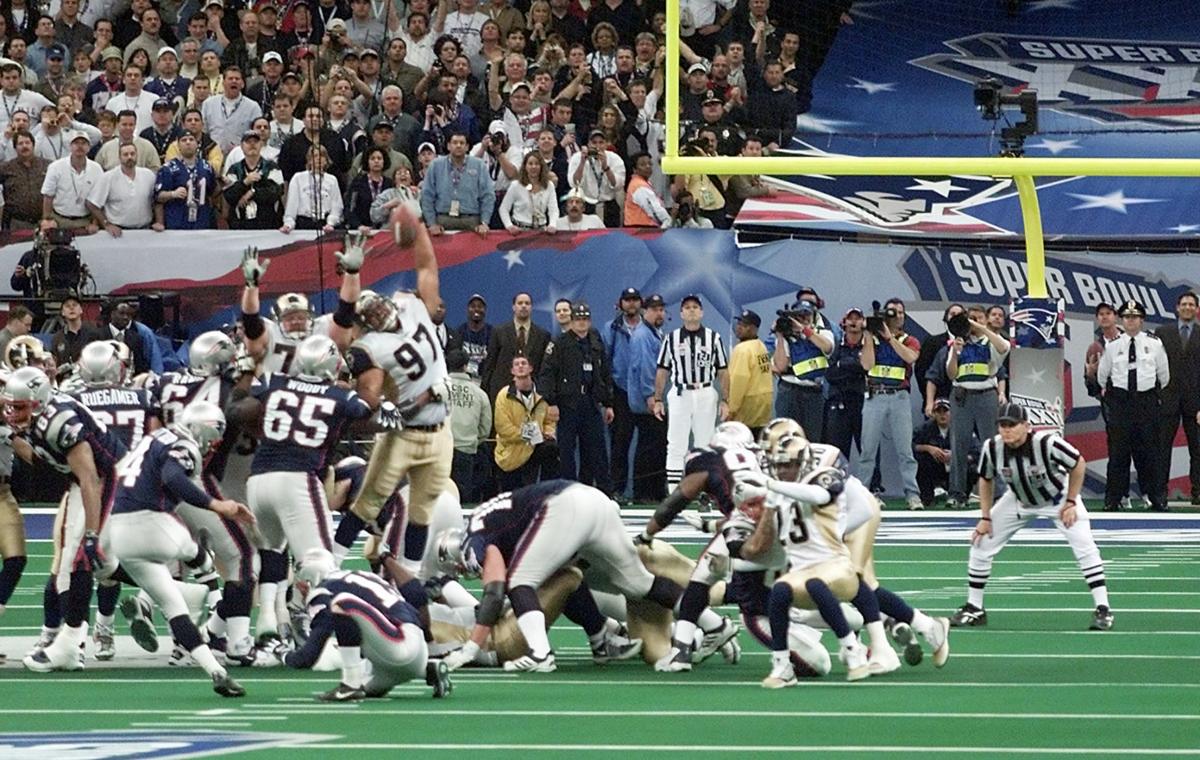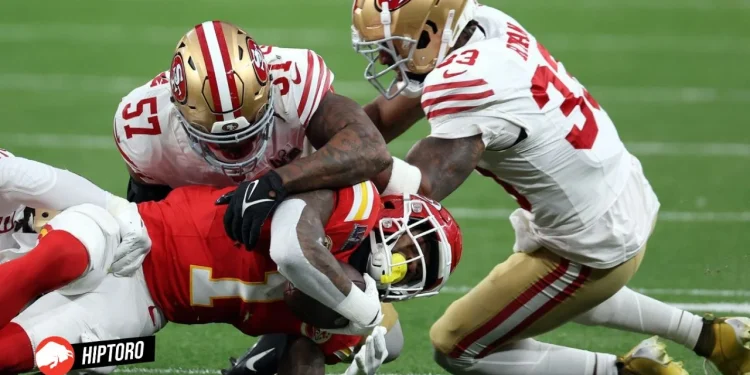In the high-stakes world of the NFL, every element is scrutinized for its impact on player performance and safety. This scrutiny extends beyond strategies and training to the very ground beneath the players’ feet.
The recent Super Bowl LVIII brought this into sharp focus with the unfortunate injury of Dre Greenlaw, linebacker for the San Francisco 49ers, raising questions about the role of playing surfaces in player safety.
Dre Greenlaw, known for his pivotal role in the 49ers’ defense, suffered a significant setback with an Achilles’ injury during the game, sparking a debate about the implications of playing surfaces on injuries.

The Incident That Sparked a Debate
As the San Francisco 49ers faced off in the Super Bowl, anticipation was high, not just for the outcome but for the performances of key players. Dre Greenlaw, an instrumental figure in the 49ers’ journey to the Super Bowl, became a focal point not for a play but for an injury that could sideline him for significant time.
In the midst of the action, Dre Greenlaw, moving onto the field after a change in possession, went down with a lower leg injury, later identified as an Achilles’ issue. This type of injury, known for its severity, immediately raised concerns about his return to the game.

The Playing Surface Controversy
The incident reignited ongoing discussions about the NFL’s playing surfaces. Last year’s Super Bowl, with its notably slippery field, had already put the spotlight on this issue, with both players and fans expressing concerns. The debate isn’t new; fields like MetLife Stadium have been criticized for their surfaces, with a vocal faction of players advocating for natural grass over artificial turf, citing a higher risk of injury on the latter.
Allegiant Stadium, with its innovative grass system, was supposed to mitigate such concerns. Utilizing a rolling tray that exposes the grass to sunlight before games, it represents a blend of natural playing conditions and indoor convenience. Yet, when injuries like Dre Greenlaw’s occur, it prompts a reevaluation of whether even the most advanced systems can fully protect players.
Can We Blame the Grass for Dre Greenlaw’s Injury?
Determining the role of the playing surface in injuries is complex. While it’s tempting to pinpoint a single cause, injuries are the result of numerous factors, including wear, individual conditions, and, yes, the surface played on.
However, it’s critical to note that the surface at Allegiant Stadium is grass, not turf, which generally is perceived to be safer. Yet, as with any injury, especially those occurring on such a significant stage as the Super Bowl, questions about the playing surface’s contribution are inevitable.
Experts and insiders are cautious about drawing direct links between the playing surface and specific injuries without conclusive evidence. The nature of Achilles’ injuries, known for their severity and the limited recovery options, complicates this further. The reality is, even with the most sophisticated technology and care, the risk of injury can never be entirely eliminated from the game.
The SFGiants are trying to give me life after the Super Bowl.
We have a guy that can hit 25-30 HRs without it being considered a shock 🥹 pic.twitter.com/HgUPG3ZDgP
— Leo Luna (@LeoLuna93) February 13, 2024
Conclusion: A Complex Issue with No Simple Answers
The debate over playing surfaces and their impact on player safety is far from settled, and Dre Greenlaw’s injury at the Super Bowl has added fuel to the fire. While Allegiant Stadium’s grass system represents a significant investment in player safety, the incident serves as a reminder of the unpredictable nature of sports injuries.
It underscores the necessity for ongoing research, dialogue, and innovation to safeguard the athletes who entertain and inspire millions. The NFL, as a beacon of professional sports, has a responsibility to lead this charge, ensuring that the pursuit of glory is never at the expense of player welfare.










